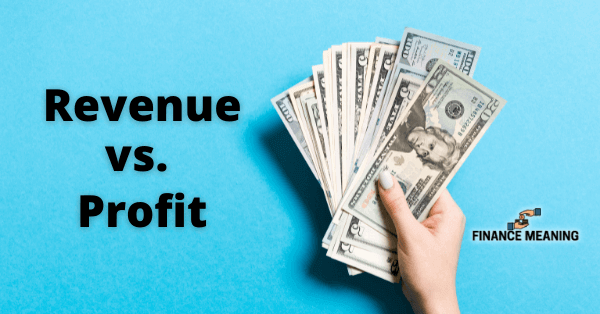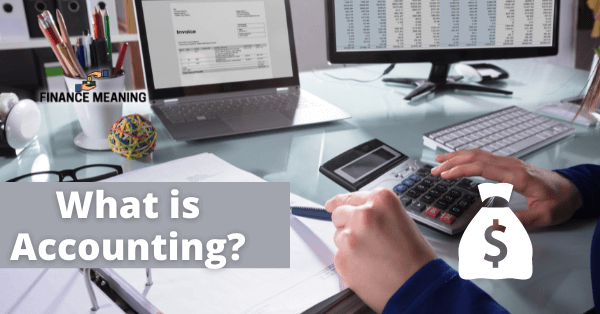The idea of calculating revenue vs. profit has become more critical in this pandemic. The dealers, wholesalers, retailers, and distributors are worried about the profit margins. All this happens because of these COVID-19 positions.
COVID-19 has disturbed businesses badly. Every person in the business industry is trying hard to run their businesses in this kind of situation. As money is tight for everyone, personal finances can be complicated.
The 2021 economic recession has made things difficult and more vital than ever to manage our money more effectively. There is budgeting, saving credit cards, investment loans, insurance plans, and many more things to think about it.
A person running a business must generate some revenue and profits. He or she should know how to calculate them. Without an expert guide, a beginner investor cannot understand the way how to start and sustain.
This post will cover most aspects of revenue and profit to make their understanding easy for you. First, we have to know about the difference between profit vs. revenue. Now without any further ado, let’s start.
Overview to Revenue vs. Profit
Revenue is also referred to as the top line because it states at the top of the income statement. It’s the backbone of the statements because you cannot generate anything without revenue or not run a business.
The sales can proceed with the producer, wholesaler, retailer, and final consumer for consumption purposes. Revenue is the income generated by selling goods and profits earned after cutting expenses to those revenues.
Profit is directly dependent on revenue because when revenue is earned, either profit or loss is caused. Revenue is an independent variable, and profit is a dependent one. It has been generated when the first variable is known and must be earned.
A total of revenue cannot be an entire profit because of every must-have business expense. To make the feasibility of a business, one must have to spend some money. As a result, the company will turn into a reliable and practical course to be run out in the industry.
What is Revenue?
A person starting a business must have some money to start, called an investment, in the business world language. The top line of the income statement, called revenue, is dependent on the investment you have made.
The more investment made while making a wise decision will make your business grow, thus generating more profit. Revenue is the amount earned by selling goods.
For example, a shopkeeper will sell his goods to make revenue. Thus, by selling his items, he can make a good amount of income.
Key Examples of Revenue Understanding
A person displayed his purchased shoes as a retailer and targeted a margin to earn some money and make some income. This process of success is known as generating revenue. Without generating revenue, one cannot expand any business.
Another example of understanding revenue is cash flows. A factory owner is making transactions and writing them into his accounts of goods sold to generate revenue. A transaction action is developed to produce cash flows, and thus income will generate.
Recommended Read | Selling Books on Amazon: A Complete Guide [2021]
But earning revenue or making cash flows is not enough. We can say, by running a business, we should generate cash flows and revenues. But make it successful by calculating its profit with the actual value of the goods minus cash of goods sold.
What is Profit?
Profit in the income statement is called the net income. But mostly, people know about this as a bottom line. It is the difference between the actual prices of the goods minus their selling prices.
It’s the profit that decides whether the business is going well or at a loss. It helps the owner to determine whether he should expand his business or not.
Types of Profits
Mainly, profits are of two types:
Gross Profit
Gross profit basically is the revenue obtained by subtracting the price of goods you sell, which is the direct cost attributed to the product’s makers. For example, a cost has been generated in producing the product into the final product. Production cost is an excellent example of it.
Operating Profit
Operating profit is the revenue minus all the fixed and all variable expenses while doing business operations. The most common costs to consider include rents, utility bills, labor charges, transport, etc. They highly influence the overall revenue generated by a company.
A place needed to convert the raw material into final goods and other resources require expenses to be paid for. These expenses are then deducted from the gross profit. Both actions have been performed in the income statement section.
Key Examples of Profit Understanding
An example of understanding profit is to check the positivity ratio of the total generated revenue. A higher value than the revenue is not profit always. We have to deduct the other expense by making that product into a consumable form.
BEST WAY TO ENDORSE CHECK TO SOMEONE ELSE
Key Difference Between Revenue vs. Profit
When most people refer to the company’s profit, they are not referring to the gross or operating profit but rather to net income. It is what is left over after income and expenses.
A higher value of profit over income cannot always be positive. It’s because you have to cut down the expenses and generate the net income. If we introduce other terms here, gross revenue vs gross profit, they are correspondingly the same but are the total amounts.
A perfect example of the difference between the two is a factory owner. He has to spend money on the raw materials by making those goods into final goods. After that, he will be providing services to deliver those goods plus managing expenses of the factory.
Frequently Asked Questions (FAQs)
Can profit be higher than revenue?
No, because revenue lies over the top of the income statement, and profits sit at the bottom. It cannot be higher because all the expenses and liabilities are deducted to calculate the profit. Thus, the values of the profit figures will lessen gradually.
Revenue indicates that a business is running, and profit means that it is operating positively. So, profit appears to be lower than revenue. You can also get this concept in terms of net revenue vs. profit.
Is revenue the same as sales?
Both are commonly known as the same, but there is a slight difference in them. Revenue is brought about by selling goods before subtraction of expenses. It sits at the top of the income statement.
In contrast, sales are what the company earns after selling the goods or services provided by the company. They also determine the overall profit after selling is made.
What is more important, profit or revenue?
Both are pretty important. As we said earlier, both are interrelated to each other and dependent. Without revenue, you cannot run a business. Profit gives you an indication of the company’s actual financial health. The company’s liabilities and additional expenses are already taken into account when its profits are calculated.
How much of revenue is profit?
Profit is what we left after deducting all the expenses like debts, additional incomes, and running costs. It is not decided in a figure because every business has a smaller or bigger investment. When you have a good profit generated by paying all the expenses, you should go with the flow.
How are earnings higher than revenue?
Earning is higher than revenue because a raw material has a lower value than the final good. Such time and expenses are caused by adjusting that raw material into the final goods. They are also caused by setting a higher price to cover all the costs.
That’s why earnings are more elevated than revenue. It can only be the same if the company is making a profit.
What is counted as revenue?
Revenues are the company’s assets earned by a company’s operations or any other business activities. Fees earned by providing services or the price of selling the merchandised goods includes the cash receivables received by a company for the sales of its goods or services.
How does revenue affect profit?
Revenue is generated from the company’s goods after selling them into the market. Still, profit can calculate by deducting all the expenses caused. In this way, revenue affects profit. Because if you know, will calculate the value of revenue profit.
Conclusion: Revenue vs. Profit
Well! That’s all about revenue vs. profit so far. Revenue and profit are two effective forms that put the spotlight on the income statement of a company. Revenue lies as the top line while profit lies as the bottom line.
If you want to invest in a business or company, consider these two figures before making a decision. For a successful journey in your business, you have to consistently calculate these values. We recommend you calculate revenue on a monthly basis.
We hope you are now in a position to understand and compare both these terminologies. If you still have any questions in your mind, let us know in the comments.




